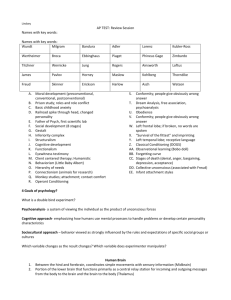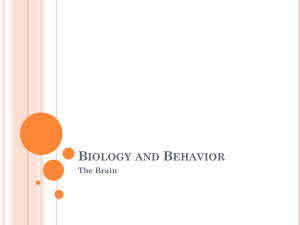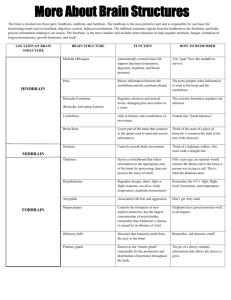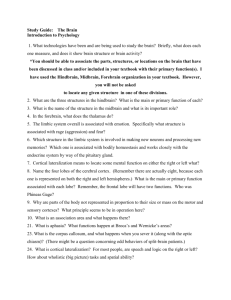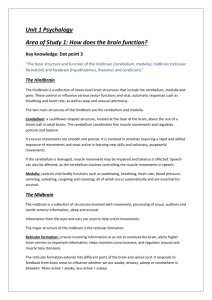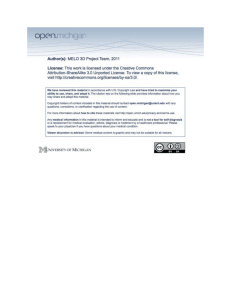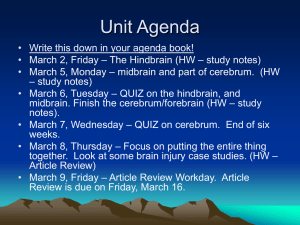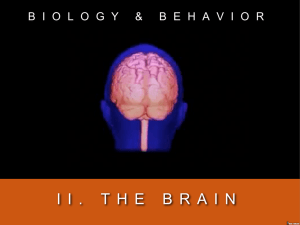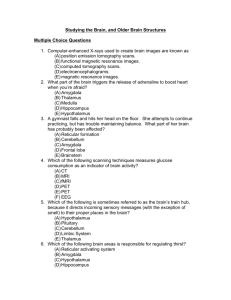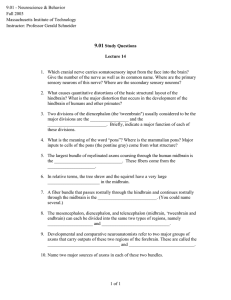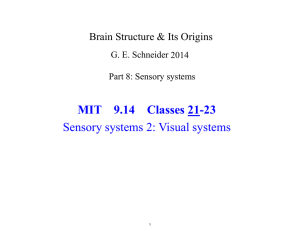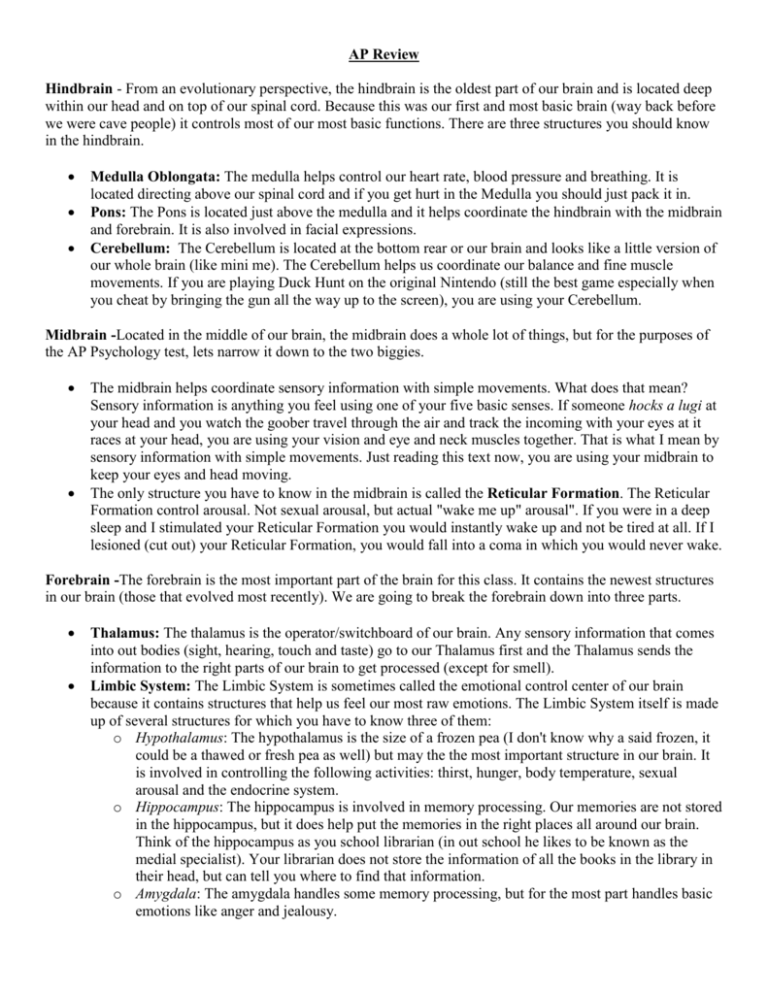
AP Review
Hindbrain - From an evolutionary perspective, the hindbrain is the oldest part of our brain and is located deep
within our head and on top of our spinal cord. Because this was our first and most basic brain (way back before
we were cave people) it controls most of our most basic functions. There are three structures you should know
in the hindbrain.
Medulla Oblongata: The medulla helps control our heart rate, blood pressure and breathing. It is
located directing above our spinal cord and if you get hurt in the Medulla you should just pack it in.
Pons: The Pons is located just above the medulla and it helps coordinate the hindbrain with the midbrain
and forebrain. It is also involved in facial expressions.
Cerebellum: The Cerebellum is located at the bottom rear or our brain and looks like a little version of
our whole brain (like mini me). The Cerebellum helps us coordinate our balance and fine muscle
movements. If you are playing Duck Hunt on the original Nintendo (still the best game especially when
you cheat by bringing the gun all the way up to the screen), you are using your Cerebellum.
Midbrain -Located in the middle of our brain, the midbrain does a whole lot of things, but for the purposes of
the AP Psychology test, lets narrow it down to the two biggies.
The midbrain helps coordinate sensory information with simple movements. What does that mean?
Sensory information is anything you feel using one of your five basic senses. If someone hocks a lugi at
your head and you watch the goober travel through the air and track the incoming with your eyes at it
races at your head, you are using your vision and eye and neck muscles together. That is what I mean by
sensory information with simple movements. Just reading this text now, you are using your midbrain to
keep your eyes and head moving.
The only structure you have to know in the midbrain is called the Reticular Formation. The Reticular
Formation control arousal. Not sexual arousal, but actual "wake me up" arousal". If you were in a deep
sleep and I stimulated your Reticular Formation you would instantly wake up and not be tired at all. If I
lesioned (cut out) your Reticular Formation, you would fall into a coma in which you would never wake.
Forebrain -The forebrain is the most important part of the brain for this class. It contains the newest structures
in our brain (those that evolved most recently). We are going to break the forebrain down into three parts.
Thalamus: The thalamus is the operator/switchboard of our brain. Any sensory information that comes
into out bodies (sight, hearing, touch and taste) go to our Thalamus first and the Thalamus sends the
information to the right parts of our brain to get processed (except for smell).
Limbic System: The Limbic System is sometimes called the emotional control center of our brain
because it contains structures that help us feel our most raw emotions. The Limbic System itself is made
up of several structures for which you have to know three of them:
o Hypothalamus: The hypothalamus is the size of a frozen pea (I don't know why a said frozen, it
could be a thawed or fresh pea as well) but may the the most important structure in our brain. It
is involved in controlling the following activities: thirst, hunger, body temperature, sexual
arousal and the endocrine system.
o Hippocampus: The hippocampus is involved in memory processing. Our memories are not stored
in the hippocampus, but it does help put the memories in the right places all around our brain.
Think of the hippocampus as you school librarian (in out school he likes to be known as the
medial specialist). Your librarian does not store the information of all the books in the library in
their head, but can tell you where to find that information.
o Amygdala: The amygdala handles some memory processing, but for the most part handles basic
emotions like anger and jealousy.
Neurotransmitters:
acetylcholine
A neurotransmitter used by neurons in the
PNS and CNS in the control of functions
ranging from muscle contraction and heart
rate to digestion and memory
norepinephrine
neurotransmitter involved in arousal, as
well as in learning and mood regulation
serotonin
A neurotransmitter used by cells in parts
of the brain involved in the regulation of
sleep, mood and eating.
dopamine
A neurotransmitter used in the parts of the
brain involved in regulating movement
and experiencing pleasure.
GABA
inhibits the firing of neurons
glutamate
An excitatory neurotransmitter that helps
strengthen synaptic connections between
neurons.
endorphin
bind to opiate receptors and moderate pain
oxytocin
Prevalent in human bonding and social
connection. The love nuerotransmitter

